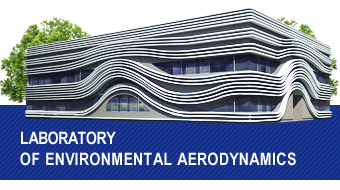Characteristics of the main directions of scientific and research work:
The main directions of scientific and research work carried out at the Department of Transport Systems can be grouped into five large areas of activity:
- logistics and shipping:
- research and modelling of goods distribution systems, including urban areas,
- development of optimization techniques and algorithms for the needs of logistics systems,
- developing integration mechanisms in supply chains,
- development and application of methods in the field of data engineering and machine learning to analyse and support decision-making processes in logistic systems,
- development of optimization techniques and algorithms for the company's internal supply chain,
- the use of computer simulation techniques for the design, behaviour analysis of logistics systems under uncertainty conditions,
- exploring the possibility of implementing a cargo bike in cities.
- public passenger transport (urban and regional)
- development of the methods for planning, rationalization and optimization of public transport systems,
- analysis of the effectiveness of individual measures for prioritizing public transport vehicles,
- development of modern techniques and measurement tools in public transport,
- development of methods for assessing the quality of urban and regional public transport,
- development of integration of rail transport with other subsystems, taking into account the local and regional context,
- using local public transport systems to operate tourist traffic,
- modern forms of individual passenger transport
- analysis of the effectiveness of paid parking zones operation,
- shaping the payment for parking in the paid parking zone depending on its location,
- optimization of the location and the size of Park & Ride car parks in both urban and suburban areas, especially in the vicinity of railway stops,
- development of the carpooling system, also as a form of providing transport services in rural areas, as well as industrial areas in suburban areas,
- development of the carsharing system, including the introduction of electric rolling stock and the popularity of this system among tourists,
- personal transport devices (UTO), incl. electric scooters,
- non-motorized traffic (including promotional activities)
- further improvement of the procedure for developing sustainable mobility plans, taking into account the Polish specificity and local conditions,
- analysis of the impact of the spatial context and the quality of infrastructure on the choice of paths in pedestrian and bicycle traffic,
- improving the method for promoting non-motorized traffic in the urban area as well as in recreational areas,
- methods for improving mutual safety in pedestrian and bicycle traffic,
- forecasting the travel and movement of people and cargo transportation
- improving methods taking into account the passenger flows among modes of transport,
- developing a model of non-motorized traffic taking into account the impact of the quality of transport infrastructure on the volume of traffic, especially cycling,
- specificity of tourist traffic in traffic modelling in the city scale and in the regional context,
- development of the methods for forecasting freight transport in logistics networks,
- the possibility of using mobile telephony databases for the purpose of verifying the results of comprehensive traffic research,
directions for integrating the planning of the city's and agglomeration spatial structure with the transport system.



